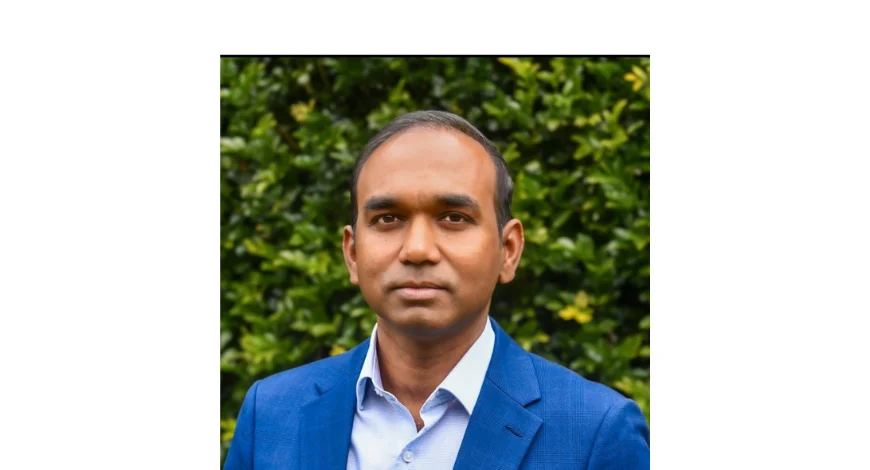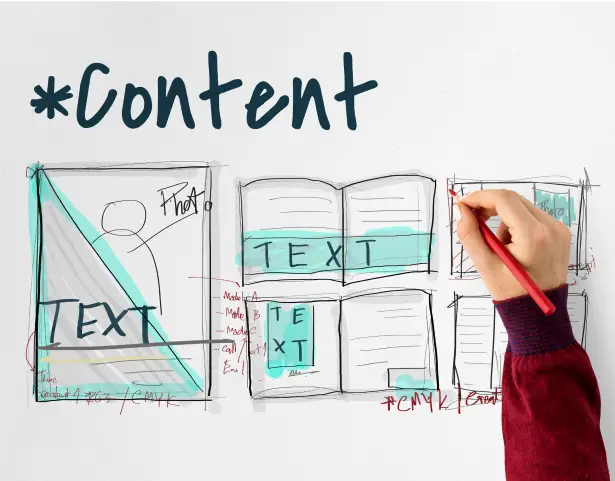
What were once empty spaces are now congested. As the skies begin to empty and fall silent in April 2020, desert storage facilities for aircraft are quickly carpeted with long streaks of metal and carbon, decorated in the liveries of the world’s airlines. Facility managers boast they can ‘walk you around the world in less than an hour.’
No region is untouched, no airline immune to the pandemic. By June 2020 two thirds of the world’s passenger fleet has been taken out of operational service and grounded. In a rare moment, airlines are no longer focused on keeping their planes up in the air but busy trying to find space for them down on the ground. Hunting for space is a nightmare. Normal facilities, desert storage or ‘boneyards’ are the first to fill, forcing lesser used regional airports to make available their aprons and taxiways for aircraft parking. Yet, still more planes need to be accommodated. With little alternative the world’s once busiest airports convert their prime real estate into open air storage plots. Runaways, taxiways, and aprons are soon flooded with aircraft.
“Schiphol is packed” KLM Community Manager Annemiek Cornielje told Time magazine. She continued “Not with passengers, unfortunately, but with the many aircraft parked on the ramp and even on a runway. Choreographing this is sad, and a parking-puzzle.” Schiphol wasn’t alone. In Europe Frankfurt, Copenhagen, Paris, and Vienna were nose to tail in idle aircraft; in the US it was Pittsburgh and Tulsa and Atlanta and Phoenix and Houston and San Antonio. In Asia, Seoul, Hong Kong, Sydney, Melbourne, Brisbane, and Delhi housed hundreds of motionless aircraft between them.
2020 was a watershed moment for travel. It was a rare occasion when all stakeholders were simultaneously forced to re-assess and re-define the industry, and how it would function going forward. Rules were re-written, priorities re-ordered, and its evolutionary trajectory permanently altered. The impact of the pandemic was so dramatic on travel you sensed the response would be equally significant.
Travel Management Companies (TMC) have been vocal about their response. Compelled to react to their clients new working practices, along with changes in traveller behaviours, TMCs are re-thinking their service offerings and re-engineering their operations. I am curious about how these initiatives might tell a bigger story of change, so I recently spoke with four TMC heavyweights. They shared their insights and priorities, and where they are placing their big bets. While they are unanimous, the future looks promising, they differ on the best way of getting there. They are presented in alphabetical order, so let’s dig in.

Rachel Tonge is Vice President SME Client Management EMEA at American Express Global Business Travel (Amex GBT). She has been part of the Amex GBT line up for six years, and prior roles include General Manager UK and Director of Global Strategic Transformation. Before joining Amex GBT, Rachel cut her change management teeth at Accenture, with clients such as Shell and Walt Disney. Rachel is well versed in the mechanics of big transformation, and she brings these highly valuable skills and experiences to Amex GBT at a critical time.
It's a Wednesday afternoon and we speak via Zoom. Rachel begins by framing our conversation: “Business travel is playing a very central role in the post COVID modern workforce.” Rachel’s focus on workforce, rather than traveller, is illuminating and speaks to Amex GBT’s ambitions to broaden its services, widen its appeal, and play a bigger role in supporting its clients. Rachel elaborates, outlining what Amex GBT see as the key areas of change.
Firstly, there is a change in traveller behaviour. There are fewer day trips but an increase in “meaningful travel” where trips are more thought-out, more deliberate, and less last minute. Itineraries are also more considerate of traveller wellbeing, with all aspects of the trip catered for to remove as much trip related stress as possible. Historically, it has been the secondary elements of the trip, transfers or on airport parking for example, that were overlooked and underserved. That is fast changing.
Secondly, there is material uptick in smaller meetings and internal events as companies navigate hybrid and remote working practices. With the physical office now less of a node in the network of inter and intra organisational relationships, companies are proactively orchestrating rapport building and team bonding experiences. As a result, “there is growing demand for Amex GBT’s Meetings and Events (M&E) function.”
Thirdly, sustainability is no longer an optional extra but a core element of the trip. Amex GBT has “weaved green insights into the booking process” to ensure clients and travellers are making informed choices. These insights include reporting on the “end-to-end life cycle of emissions and providing for both off-setting and in-setting initiatives.” Amex GBT has also super charged its consulting team, who can work with clients to reduce travel related emissions.
Amex GBT places its commitment to continuous improvement and operational excellence at the highest level of the organisation through a Transformation function intrinsically linked to the company’s strategy and business priorities.
Led by a Chief Transformation Officer, the function is dedicated to creating incremental value at scale by “driving operational efficiencies, leading strategic initiatives, and enhancing organisational agility through change management.”
Among current transformation priorities is Amex GBT’s service optimisation program, which is focused on delivering ongoing customer experience enhancements through technology, data insights, and end-to-end process reengineering.
The function also operates as an incubator for talent by attracting and developing high potential individuals of diverse backgrounds, who can deliver material impact while learning the business as they progress through the company.
Rachel speaks frequently of the need for a “seamless end-to-end service,” and of the complexities in providing that service. Corporate travel is a complicated ecosystem, comprising a wide range of data touchpoints across a range of technology platforms. Just consider the number of bespoke travel policies, negotiated fares and special rates, traveller profiles, disruption management reports, and Duty-of-Care reporting, and you have a sense of what’s involved.
What ‘end-to-end’ means is the million-dollar question. Amex GBT recognise they have moved beyond pure people logistics and expense management. They now provide services and expertise that more directly contribute to a client’s overall employee experience as well as their productivity.
I ask Rachel whether the term travel management company is big enough for Amex GBT’s ambitions.
“It’s a really good question. Our focus is becoming a one stop shop, offering as big and diverse a marketplace as possible. Travel is now much more than a simple city-to-city pairing. It’s about the logistics of people, it's about the trip from the moment the traveller steps out of their door, and how the trip fits into the traveller’s overall employee experience.
We support our clients through all of this with the largest and most valuable B2B marketplace in travel," Rachel concludes.

I join Jorge Cruz, a twenty-five-year veteran of BCD, the day after a strategy workshop involving the company’s top leadership. Present for part of the meeting is Stephan Baars, BCD’s incoming CEO. Baars will formally take up his role on July 1st but is already known to the company having worked at BCD previously.
Jorge, Executive Vice President, Global Sales and Marketing, welcomes a “smooth leadership transition” recognising they are all too rare in today’s operating environment. He is equally upbeat about where the industry is heading, and what that means for BCD.
BCD is a distinctive entity that remains understated and reserved despite its undisputable growth and success. It is a brand humbled by its accomplishments. Here is a company that nurtures home grown talent, outgoing CEO John Snyder spent thirty years at the company. It has been voted ‘most admired’ travel management company a record ten times by readers of travel publication The Beat, most recently in 2022. It signed the first-ever sustainable aviation fuel (SAF) agreement for a TMC. In 2023 it won its sixth gold Stevie® Award for its TripSource app, and was recognised as a standout company for taking the lead in achieving gender equity in the tech space by Women Impact Tech 100.
Jorge graciously acknowledges the wins but steers the conversation back to BCD’s founding principle: customer satisfaction. It may sound quaint, but Jorge’s sincerity is both striking and refreshing in a hurried, digitally submerged world. Plus, it has served BCD well over the years, creating a travel powerhouse.
Jorge says BCD is maintaining its “customer centric focus” to ensure it isinnovating in the right product areas.
I ask Jorge what those areas are post COVID. He responds “duty of care, including traveller wellbeing” tops the list. Sustainability has firmly established itself as another key customer requirement, and the need to manage and deliver effective virtual meetings is now a permanent feature of the corporate landscape.
Being close to its customers has allowed BCD to read the market. Pre COVID it had already sensed changing requirements in the M&E space, and it pursued an acquisitive strategy culminating in its 2019 purchase of L37 Creative to bolster BCD’s engagement offerings. With this “wide range of scope and services” BCD’s M&E unit is currently recording faster growth than its traditional travel business, which is still dependent on overall market volumes returning to 2019 levels.
Like its peers, BCD is deploying new technology at scale within the more traditional parts of its business. Jorge shares the process is channelled through the product development team, is more evolutionary than revolutionary, due to the complex nature of corporate travel, and is focused on simplification. Innovations include wider use of AI in both new and existing products, and enhancing the shopping experience, while increased investment is being made to access multi source data and provide enriched analytics. To process all this activity BCD went on a hiring drive in 2022 adding 3,000 new associates.
BCD are supporting clients with a more diverse set of products and services, and I am again challenged by the growing awkwardness of the term TMC. I feel compelled to raise it with Jorge.
“I see your point” he says. “In addition to describing ourselves as a TMC, which is more of an industry term, we are a digital travel services company.” There is an emphasis on the word services, and its elasticity across client needs. The fundamental management of travel is still needed, he continues, but a more diverse set of services are also being offered and used. BCD invests heavily in tech solutions and builds, buys, and partners across its portfolio to meet the changing needs of the market. They offer a dynamic marketplace of technology partners and provide open access to data and systems for their clients.
BCD’s declared mission is ‘to help people and companies travel smart and achieve more,’ and it appears BCD is attempting to define what ‘more’ is. The organisation scores highly in employee engagement and culture, in the top five percent of similar sized companies according to Comparably, so one assumes it won’t take them long to work it out.

Minneapolis to Cairo is a trip across three continents, one ocean and one sea. Luckily for me John Pelant’s trip includes a short stopover in Paris on a bright Tuesday morning. Despite travelling through the night John, CWT’s Chief Experience & Technology Officer, is wide awake. His remit stretches across large swathes of the organisation and the globe.
John starts our conversation by listing CWT’s current priorities based on shifting market needs: ESG, with an emphasis on the Environmental component, capturing, displaying, analysing, and reporting emissions data; digitalisation across all touch points to create a truly omni-channel experience; enhancing connectedness with the end-user; seeking operating efficiencies through technology; traveller wellbeing that extends beyond safety and risk management; being Diversity, Equity and Inclusion (DEI) compliant by re-working user interfaces. It’s an intoxicating to-do list, and one assumes the lights are burning late into the night at CWT’s Minneapolis offices.
John has been at CWT for fifteen years and ridden the waves of previous industry changes. He started in IT, moved to IT Operations, then Product Development, held the role of CIO and is now CTO and head of Customer Experience. He is in the eye of the storm, although you wouldn’t sense it from his calm and measured manner.
I ask John about technology.
“When we talk about tech, we don’t talk just about tech, it’s really the people plus technology” John says. “At the end of the day, we want to create a best-in-class experience for the end user – whether they’re managing travel arrangements independently or reaching out to a travel counsellor for assistance.” In the past 12 months, CWT has added a host of new capabilities to the web and mobile channels of its myCWT platform. At the same time, the TMC has been arming its travel counsellors with “advanced tools and tech to operate more efficiently and provide better service.”
For home grown innovation John shares “we do it very intentionally, but not specifically through a transformation office. We have a product innovation team within our Experience and Technology organization, but innovation is embedded in our culture and happens across all parts of the business.” It is amongst the functions that CWT is shaking things up the most. In March it announced it was combining its Traveller Experience, Product and Technology groups under John’s leadership. This is a bold move and departs from industry norms. John suggests it is an “evolutionary” path, the natural coming together of three inter-related functions, and will create a single-line-of-sight to the end-user, be it counsellor or traveller.
Like its peers CWT is also scaling its M&E arm, and John confirms “demand is strong.” Jump onto their web site and you are offered help in arranging your ‘hybrid and virtual events.’ Scroll down and you can ‘book your next meeting room in a few clicks.’ John underscores the changing nature of the M&E space, sharing that CWT are actively examining how to foster better collaboration within the meetings it is arranging on behalf of its client companies. Across an increasing number of client touch points CWT is showing up as a business partner, providing a growing range of services from booking travel to consulting, from sustainability to setting up internal meetings.
On the 7th of February 2023, TripActions, a leading corporate booking platform, changed its name to Navan (a combination of navigate and avant (as in avant-garde)). The name change marked the next stage in the company’s evolution which ‘would unify its travel, corporate card and expense platforms into a single application.’
On April 1st 2023, Navan issued a press release apologising to customers for any confusion, and announced it was re-branding back to TripActions. Ariel Cohen, co-founder and CEO elaborated: “First, I’d like to apologize to our customers, users, and investors for the confusion this has caused. This was a rash decision made without any market research.” He continued “My habit of drinking champagne prior to 9am wasn't helpful.”
The second announcement was an April Fools prank, but effectively communicates how Navan sees itself, and its maverick status in the TMC space. Navan has always punched above its weight; it has a disproportionate share-of-voice, which on occasion elicits envy disguised as dismissiveness from its more established peers.
But Navan is very serious about its ambitions to up-end the corporate travel market with a digital first offering. No surprise then that its EVP and GM, Nina Herold, is ex-Uber. Nina joined Navan a little over five years ago and oversaw operations and product before assuming her current role, where she added leadership of both business and personal travel units, as well as design and user research to her portfolio of responsibilities. The latter two clearly signal the digital nature of Navan.
I start by asking Nina to explain the rebrand.
The re-brand is about expanding the stage Navan play on. “We are more than just travel. We are an end-to-end, all in one experience [that] keeps the end user front and centre of what we do.” Dropping the TripActions name wasn’t an easy decision Nina shares. It had a lot of recognition but “our company, and our thinking, and our approach have really evolved over the last eight years to more than just solving the specific needs of the business traveller.”
Nina lists how Navan helps clients today: Core to what we do is allowing users to easily book, view, and manage their business travel and expenses, but we also support the administration of travel programmes, provide personal travel, offer M&E services, and support group and guest travel. It becomes clear Navan has morphed beyond solving a single use case, a great user experience for the corporate traveller, and is “now solving multiple pain points.” Nina’s vocabulary serves as a reminder of the company’s Palo Alto roots. She wraps up the branding conversation by highlighting how an acute focus on the end-user creates a flywheel effect, which I assume helped Navan achieve its $9.2 billion market valuation in October 2022.
Navan has a strong track record in raising working capital and leverages its financial prowess effectively. In April of 2021 it acquired UK based Reed & Mackay, in 2022 it acquired European firms Comtravo, Resia, and Atlanta Events & Corporate Travel Consultants, and in April 2023 it acquired India’s Tripeur. It feels like the buying spree may not be over just yet.
If the end-user is the first priority in Navan’s operating model, technology must be a close second. Navan has weaved together an effective combination of cloud infrastructure and mobile point-of-delivery, with content categorised and sorted by AI, and rendered through user-friendly interfaces.
I wonder if accessing talent is an issue for Navan, especially considering their heavy reliance on progressive technologies. I raise the question with Nina.
Attracting tech talent is made easier by being a digital first shop. For Navan, technology isn’t a “bolt on” and its internal processes and operating design feel very familiar to new hires from other digital entities. Navan is also very deliberate about its working arrangements, expressing a preference for in-person offices that foster collaboration and provide a palpable vibe of belonging. It’s a culture thing, it’s a style thing and “being big on in-person is how we operate our company” says Nina. “We lean heavily into those in person interactions whenever possible.”
After my discussion with Nina, I visit Navan’s website. Clicking on ‘About Us’ I am presented with its principles for software development: Enable human connections; Help businesses run operations efficiently and make better decisions based on data and insights; Meet the needs of users based on modern standards and expectations. I am left wondering whether these principles extend beyond software.

“The future has arrived — it’s just not evenly distributed yet.”
William Gibson is an American-Canadian author of speculative fiction whose work explores the future implications of technology. His 1984 novel, Neuromancer, helped popularise the term cyberspace, but Gibson is best remembered for his 1992 comment “The future has arrived — it’s just not evenly distributed yet.”
The quote serves as an effective frame for the current TMC landscape. The basic plumbing of search, shop, and book remains critical, as does reporting and policy compliance and duty of care. Tactical, incremental, and continuous innovations are needed to ensure the plumbing is fit for purpose and the system functions.
But to create future value TMCs are going to need to migrate from doing only what is probable to helping clients enact what is possible. Early signs of this entrepreneurial value creation are evident across all four of the TMCs I spoke with. Each is experimenting and discovering and trialling, and when they hit a vein, they are scaling.
On my desk is an infographic of the employee experience technology stack. TMCs are included towards the bottom, in the ‘Self-Service Productivity Tools’ section. The category above is called ‘Collaboration and Communication’ and already feels outdated. I wonder if a third C is missing: Convening.
Convening is the word that has lingered – unsaid – in my conversations. It is the essence of what today’s TMCs are performing, and ironically, they are doing even more of it despite putting fewer people on planes. What the TMCs are building are marketplaces comprising of basic infra-structure and utility like transactional functions, layered with knowledge rich services, all aimed at enabling the productive and effective convening of work teams and communities.
Look hard enough and you can see the future has already arrived, it’s just not evenly distributed. But I sense the big four TMCs are busying themselves, puzzling their way to a new definition of who they are.




















